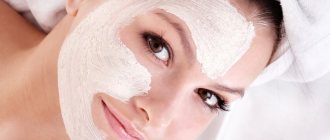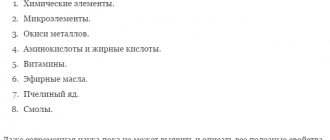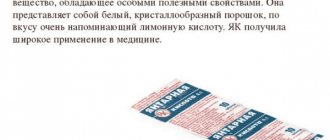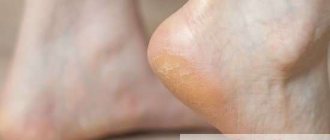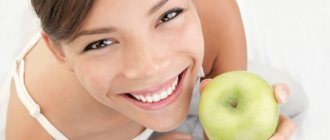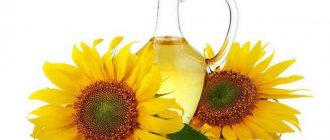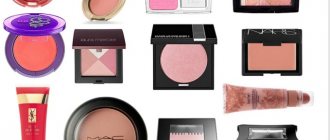From this article you will learn:
- What is a skin phototype
- What are the Fitzpatrick skin phototypes?
- What are the alternative classifications of skin phototypes?
- What will knowing your skin phototype give you?
- How to determine your skin phototype using a simple test
- What are the rules of tanning for different skin phototypes?
For some people, getting a perfect tan is easy, while others may spend long hours on the beach without the desired results. It all depends on the skin phototype, which is embedded in the genetic code of each of us and remains unchanged even under the influence of various factors. In this article we will look at what skin phototypes there are and how to determine them.
Practical significance of phototypes
It is advisable for every person to find out their skin phototype, since this has a direct bearing not only on external beauty, but also on health. For example, it is considered statistically significant that the development of certain types of skin tumors is directly related to the level of ultraviolet radiation absorbed by the dermis. Among them is the most malignant tumor – melanoma. These facts have been confirmed through scientific and medical experiments. Knowing your skin phototype allows you to:
- determine a safe regime for staying in the sun or in a solarium, which will result in an even and lasting tan and no burns;
- choose the right products with a sufficient level of sun protection index SPF (Sun Protection Factor);
- undergo cosmetic procedures associated with dosed damage to the skin (chemical or laser peeling) without complications;
- avoid skin photoaging;
- significantly reduce the risk of oncodermatological diseases.
Differences in male and female skin
Men and women have different skin, different problems associated with it, and, as a result, their care secrets are also different. And all this follows from biologically inherent differences in the structure of the skin.
Well, everyone has their secrets. In order to know how to preserve your beauty longer, let's consider a few key points.
Sensitivity
Even though men's skin is thicker than women's, it is more sensitive. This is directly related to the effects the skin undergoes. Environmental impact due to the specifics of the work (we are talking about professions that involve physical activity), shaving stubble - all this destroys the hydrolipid layer of the skin. But if we consider the vulnerability of the skin in terms of reaction to ultraviolet rays, then women's skin is more sensitive.
The structure of the skin largely depends on the activity of the sebaceous glands. In women's skin, estrogen is responsible for controlling them, and this causes less oil to be produced. Therefore, men's skin is naturally oilier.
Estrogen and collagen are responsible for the strength and elasticity of the skin. On average, skin thins by 1% over the course of a year. Due to the fact that after menopause, women undergo a complete restructuring of their bodies, they often look older than men. Moreover, the reaction to the sun's rays also increases with age, so protective measures should become stronger from year to year.
Upon reaching the age of 50, men have an increased risk of developing melanoma compared to women. This is primarily due to the rhythm of life - they spend more time outside, and their skin is more exposed to ultraviolet rays. This is also directly related to the fact that men use protective equipment much less often than women. Therefore, it is necessary to regularly visit a dermatologist and monitor any new growths that appear on the skin.
Cosmetics and procedures
Cosmetics created to combat the signs of skin aging are different for men and women because there are significant differences in the functional and chemical composition. Therefore, it is better not to use universal products, but to select them together with a specialist and based on your skin type and phototype.
There is no clear answer to the question of what ultraviolet rays bring more benefit or harm. Those who excessively sunbathe, especially at an advanced age, increase the risk of melanoma. But at the same time, a lack of sunny color can result in a low level of vitamin D in the body, which can lead to increased fatigue and even become a prerequisite for the formation of a depressive state. Moreover, then the consequences will be sad for both men and women.
The truth is that everything should be in moderation, within reasonable limits. If you exceed the norm for sun exposure or visit the solarium too often, you can get a burn, which can have serious consequences not only for the condition of the skin, but also for the entire body. But you shouldn’t avoid sunlight either, since nature itself has provided for everything.
Heliotherapy (sunlight treatment)
The mentality stipulates that women visit the solarium more often than men. And not the least role in this is played by the deep-rooted stereotype about the harmful effects of solarium on the body (men are not afraid of the risk associated with the release of adrenaline into the blood, but they are always very afraid of getting sick). Women, on the contrary, over the centuries have formed the habit of living according to the principle: “Beauty requires sacrifice” - this explains everything.
And despite all this, heliotherapy affects the body of men and women absolutely equally
Ultraviolet rays (whether live or artificial) provoke the production of melanin in the skin, which affects the change in skin tone. Moreover, even in terms of tanning intensity, there are virtually no differences between male and female skin, although the chemical composition is somewhat different
Be careful! Possible contraindications:
Prohibitions on visiting a solarium or the beach may be associated solely with the presence of some personal medical contraindications, but they do not depend on gender. For women, however, this list is still longer: in addition to dysfunction of the thyroid gland, this also includes cysts, polyps, fibroids and mastopathy.
Fitzpatrick classification
There are many gradations and systems that define the so-called “skin passport”. One of the most convenient and widespread of them is the classification of the famous American dermatologist Thomas B. Fitzpatrick, developed in 1975. His scale divides all people into 6 categories depending on the saturation of the dermis with melanin and its reaction to the action of ultraviolet radiation. In addition to natural skin color, the Fitzpatrick phototype takes into account hair and eye color .
WINTER color type
The winter color type is the second most common in Russia. Winter is a cold color type, the distinctive features of which are the depth of color and a very high contrast between the eyes, skin and hair. This color type is very interesting due to the differences between the subtypes. Winter is divided into: Dark Winter, Cold Winter and Bright Winter.
| Dark Winter corresponds to the month of December. The main feature of this subtype is the deep, dark colors in appearance; it is not without reason that it is called Dark. However, adjacent to Dark Autumn, it may have warm notes in its palette. For example, the eye tone may have amber splashes, the tan may be golden. | Cold winter - This is the month of January. The coldest of winter. This subtype is devoid of warm colors and is best revealed when surrounded by clothes, jewelry and cosmetics in cool shades. Cold Winter's eyes are always icy, dark to medium cold. And your skin tone may even be a little reddish. | Bright Winter represents the month of February. The characteristics of this subtype are already contained in the name itself. The main distinguishing feature is the bright colors. These are bright irises from light, medium to dark. Eye color is always clear, radiant without muted tones. Bright, saturated colors in clothes look ideal, and the contrast between hair, eyebrows and skin is very important. |
I phototype
Name: Celtic. Skin: very light, sometimes translucent, milky white or with a porcelain tint, easily blushing when nervous; often with a lot of freckles. Representatives of this category have a feature - light nipples, which is due to the low melanin content in these areas. This skin type is typical for Europeans. Hair: Almost always very blond or red. Eyes: blue, gray or green. Reaction to ultraviolet light: maximum photosensitivity. Since the pigment is formed in small quantities, after just a quarter of an hour of exposure to the sun, signs of a first-degree burn (hyperemia and burning) may appear. Subsequently, peeling occurs, and residual hyperpigmentation may persist for a long time. An even tan is almost unattainable. Recommendations: Since this phototype has the highest risk of developing skin cancer, it is advisable to always avoid exposure to sunlight. If sun exposure is necessary, it is mandatory to use photoprotective products with a high protection factor (SPF from 30 to 50). Increased caution should be exercised when undergoing laser or chemical peels as there is a high likelihood of developing hyperpigmentation and long-term irritation. Typically, procedures with a mild and superficial effect are prescribed. Famous representatives with skin phototype I: Nicole Kidman, Claudia Schiffer, Renee Zellweger, Scarlett Johansson, Julianne Moore.
Tools Overview
For combination and oily skin
| Product name | Active components | Mode of application |
| Normaderm 3-in-1 micellar makeup remover solution, vichy where to find? | zinc PCA, Vichy thermal water | Apply using a cotton pad. |
| Antioxidant serum Phloretin CF, SkinCeuticals | L-ascorbic acid, phloretin, ferulic acid | Apply 4-5 drops to cleansed skin in the morning. Must be used in conjunction with sunscreen. |
| 5-in-1 BB cream “Clean Skin Active” for oily, acne-prone skin, Garnier | mineral pigments, salicylic acid | Apply in the morning to well cleansed and moisturized skin. |
For dry skin
| Product name | Active components | Mode of application |
| Cleansing gel-cream “Absolute tenderness”, L'Oréal paris | Gallic rose and lotus extracts | Use in the evening to remove makeup, and also in the morning while washing your face. |
| Moisturizing toner Equalizing Toner, SkinCeuticals | aloe juice, plant extracts (blueberry, sugar cane, lemon), sweet orange oil | Apply to a cotton pad and treat previously cleansed skin of the face, neck, and décolleté. |
| Moisturizing cream Ultra Facial Cream, Kiehl's | squalane, antarcticine, desert plant extract | Apply morning and evening to cleansed facial skin. Suitable for use in cold seasons. |
For normal skin
| Product name | Active components | Mode of application |
| Micellar water with oils, Garnier | cleansing oils, micelles | Shake bottle before use to activate formula to remove makeup and remove excess oil and impurities. Dampen a cotton pad and cleanse your face, eyes and lips without unnecessary rubbing. |
| Daily moisturizer for sensitive skin of normal and combination type Hydreane Légère, La Roche-Posay | glycerin, hydrolipids, La Roche-Posay thermal water | Apply to cleansed face and neck in the morning and/or evening. Can be used as a primer. |
II phototype
Names: Nordic, Aryan, Scandinavian, Germanic, Eastern European, fair European, fair-skinned European. Skin: light; There are few or no freckles. The phototype is also characteristic of Europeans. Hair: Various shades of light brown or light brown. Eyes: blue, gray, green, less often light brown. Reaction to ultraviolet light: fairly high photosensitivity. Burns occur easily (after about 20 minutes of sun exposure). The tan does not apply well and is unstable. Recommendations: it is possible to obtain a golden skin tone with rare and short sunbathing (no more than 10 minutes) during relatively “safe hours” (before 11 and after 16). The optimal schedule for visiting a solarium is a series of exposures lasting up to 15 minutes with breaks of at least two days. It is advisable to use photoprotectors with an SPF of about 30. Famous personalities: Charlize Theron, Kate Moss, Cameron Diaz, Marilyn Monroe.
Makeup
By emphasizing natural characteristics, you can get a striking effect.
When doing makeup, you should avoid warm brown shades. For Summer, the best option would be blurry makeup with smooth transitions. Shadows should be used in muted lilac, plum, blue, olive and purple shades to create a smoky effect. You can choose either a fairly bright lipstick (red, plum, fuchsia) or a coffee-with-lait color as a daily option. It is not recommended to use eyeliner. Clear lines make makeup look unnatural.
For Winter, sharp contours with an emphasis on the noble whiteness of the skin are preferred. For every day, we can recommend pink, blue, lilac shadows. Bright and even extravagant lipstick is ideal - purple, blood red, cherry.
III phototype
Names: Central European, dark European, mixed, dark European. Skin: slightly dark, with an olive or ivory tint, practically without freckles. Hair: shades of chestnut, dark brown, rarely black. Eyes: gray, brown. Reaction to ultraviolet light: tanning occurs easily and quickly with the formation of a moderately dark shade; however, burns may occur with excessive initial exposure to the sun (more than half an hour). Recommendations: rational insolation regime, especially when suddenly moving to southern latitudes. Solarium: exposure up to 25 minutes with one to two day breaks. Use of protective products with high or moderate SPF (from 15 to 25). Representatives: Angelina Jolie, Elizabeth Hurley, Natalie Portman, Kristin Davis.
When to see a doctor?
Here's what you need to talk to your doctor about:
- the appearance of new moles;
- existing moles are becoming larger;
- moles become spotted;
- moles changing color from brown to black;
- the mole becomes raised or a lump appears in the middle;
- the surface of the mole changes texture and becomes rough or ulcerated;
- moles that itch or tingle;
- moles that bleed or ooze;
- moles that are unlike any other.
IV phototype
Names: Mediterranean, Southern European. Skin: dark, olive, no freckles. The phototype is typical for residents of Latin America, Asia, the Caucasus and the Mediterranean. Hair: dark brown or black. Eyes: brown, dark brown or black. Reaction to ultraviolet radiation: the skin has high natural protection (about 40 minutes); A pronounced and lasting tan quickly appears. Sunburn is very rare, but prolonged exposure to high doses of ultraviolet radiation can cause photoaging of the skin. Recommendations: use light protective agents (SPF from 8 to 20) to prevent solar aging. Solarium: to get a good tan, you can do 10 half-hour sessions (daily or at daily intervals). Celebrities: Monica Bellucci, Penelope Cruz, Salma Hayek, Jennifer Lopez, Eva Longloria.
What color range is suitable?
Representatives of a cold color type should choose an appropriate wardrobe. Light grey-beige, other shades of grey, dark and cool blues, purple and black are suitable as the main neutral color. Accessories can be selected in cool pink, raspberry, fuchsia, bleached lilac, plum, and sea green.
Summer women can turn to warm colors, as long as they are not bright. Pastel colors work well: pale pink, blue; as well as cocoa, burgundy, dark blue. Certain shades of yellow, beige, and brown will allow the warmth of this color type to appear. It is better to avoid orange, apricot, yellow-green. Light, flowing fabric with abstract patterns or floral motifs best emphasize the femininity of Summer.
Bright contrasting colors are suitable for winter - fuchsia, yellow, emerald. Women of this type suit smooth and shiny fabrics (for example, satin), knitwear and leather look great. The fabric should be chosen in a single color or with a clear geometric pattern.
V phototype
Names: Middle Eastern, Indonesian, Asian. Skin: dark, dark brown, possible yellowish tint; no freckles. The phototype is found mainly in residents of Southeast Asia and many Latin American countries. Hair: dark brown or black. Eyes: dark brown or black. Reaction to ultraviolet radiation: a high degree of natural skin protection; sunburn is extremely rare (this only happens with very intense and prolonged exposure to ultraviolet radiation). The acquired tan is almost invisible against the background of natural pigmentation. Recommendations: minimal protection may be necessary when exposed to strong sunlight after a long break (use products with SPF of about 10). Since there is a high probability of hyperpigmentation, some cosmetic procedures should be carried out with caution - for example, many options for chemical or laser peeling (the same applies to skin phototype VI). Famous representatives: Nicole Scherzinger, Michelle Yeoh, Lucy Liu.
How to determine the color type of appearance
It only takes three steps.
Find out if you are a cold or warm type
There are three ways to do this. Choose the one that is more convenient, or use all at once - for reliability. In any case, it will take a matter of seconds.
Method 1. Through the veins
Go to the window on a sunny day and look at the wreaths on your wrist. If they are distinctly blue, your type is cold. If you detect at least a hint of a greenish undertone in the color, your type is warm.
Method 2. Using a white napkin
Stand in front of a mirror in a well-lit room and place a white napkin on your face. Take a closer look at what shade your skin takes on against its background. Slightly pinkish - your type is cold. Yellowish - warm.
Method 3. For gold and silver
You will need two pieces of paper, fabric or foil - one gold, one silver. Apply them one by one to the skin around the wrist. Against the background of your color, the skin will have a uniform, healthy shade. Against the background of the second one it will seem gray, faded, spotted.
If silver suits you, your type is cold. Gold is warm.
Determine your contrast
It's quite simple. Look at your face in natural light.
If the color of your eyes, hair or skin stands out strongly from the rest, you are a contrasting type. A prime example of this type is the classic Disney Snow White with black hair, dark eyes and porcelain skin.
A little less bright, but still indicative - Cinderella with her white skin, piercing blue eyes and bright blonde hair.
Stills from the animated films “Snow White”, “Cinderella” / Lifehacker
If the colors of your eyes, hair and skin resonate with each other, you are a muted type. Disney examples are Rapunzel and Tinker Bell.
Stills from the animated films “Tangled,” “Fairies” / Lifehacker
Compare the results
The seasonal color type is determined based on temperature and contrast.
- Cold and contrasting - winter.
- Cold and muted - summer.
- Warm and contrasting - autumn.
- Warm and muted - spring.
VI phototype
Names: African American, African. Skin: dark brown or blue-black. The phototype is characteristic of people from the African continent and the aborigines of Australia. Black hair. Eyes: dark brown or black. Reaction to ultraviolet radiation: natural skin protection from UV exposure can be considered ideal, since it allows you to constantly be exposed to direct rays of the sun without any damage; Photoburns never happen. Recommendations: use nourishing and moisturizing agents if necessary. Artificial photoprotection is not required. It is necessary to evaluate contraindications when using most types of peeling and hair removal (there is a high risk of hyperpigmentation). Celebrities: Naomi Campbell, Tina Turner, Whoopi Goldberg.
Skin phototypes should be taken into account when choosing an adequate and safe tanning regimen, purchasing photoprotective products and undergoing certain cosmetic procedures. This will prevent burns, preserve beauty and protect health.
L'Oréal Paris Alliance Perfect foundation: benefits
- Firstly, it has a light texture, but at the same time effectively hides all imperfections and literally merges with the skin.
- Secondly, among the ingredients is vitamin E, which will nourish and moisturize the skin.
- Thirdly, the cream provides a beautiful matte effect.
- Fourthly, thanks to the wide range of shades, the chances of finding your ideal tone are greater than ever - there are as many as 33 of them in the collection!
Plus, you don't have to look closely at a bottle of foundation to determine the undertone of a specific shade. Next to the shade number you will find a Latin letter: R, D or N. The marking R is a means of a warm shade, D is a cold shade, and N is a neutral shade.
https://www.youtube.com/watch?v=ytcopyrightru
Now, taking into account your color type and skin tone, you can easily choose a foundation that will be invisible on your skin. You can apply the product using a sponge to obtain a thin and invisible layer. When creating evening makeup, use a brush to get a denser tone.
What levels of SPF protection are there?
The degree of protection against UVB radiation, which causes sunburn, is considered to be the numbers indicated next to the abbreviation SPF:
- SPF 10 blocks less than 90% of UVB rays;
- SPF 15 – 93%;
- SPF 30 – 97%;
- SPF 50 (+) – 98%;
- SPF 100 filters up to 99%.
There are 2 types of SPF filters:
- Physical
(mineral): titanium dioxide (titanium dioxide) or zinc oxide (zinci oxydum) are the most common existing ones. They work as a protective screen that reflects the sun's rays from the surface of the skin. Suitable for sensitive skin (including children's skin). - Chemical
(oxybenzone, octocrylene, mexoril, etc.): absorb UV radiation, becoming more active under their direct influence. Some chemical filters are effective against the negative effects of UVA rays, and some are effective against UVB rays.
Modern manufacturers often combine both types of filters in formulas to protect the skin from a wide spectrum of radiation.


